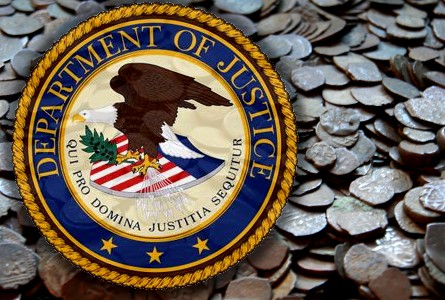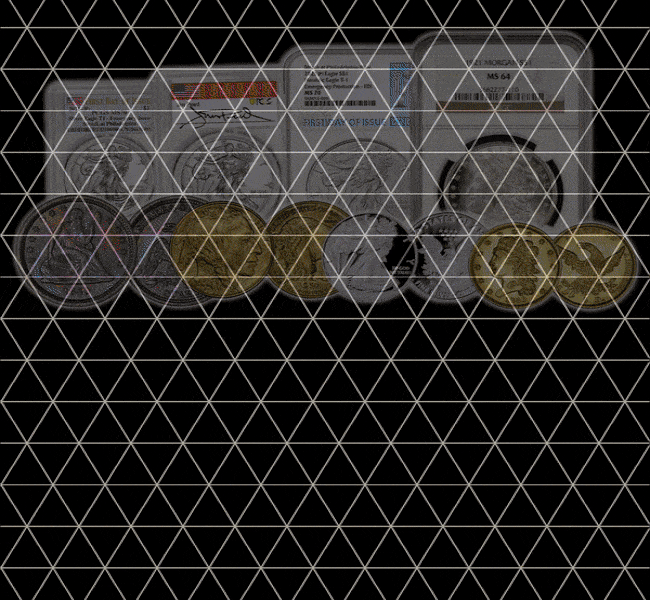By Wayne Sayles – Ancient Coin Collecting Blog ………..
The Daily Record, a news service for Maryland based business and legal professions, ran an interesting report about the Ancient Coin Collectors Guild forfeiture case in its July 13, 2014 issue. This test case is described in numerous news items at the guild website. The Daily Record piece by Legal Affairs staff writer Danny Jacobs is apparently available online only by paid subscription. The headline is catchy, to say the least: “Five years on, test case on coins tries USAO’s patience”. The essence of this balanced report is distilled from a recent filing in Baltimore by federal prosecutors. Jacobs describes the document as a harshly worded motion complaining of the “waste of judicial resources” expended by the US Attorney’s Office. The USAO lays responsibility for that claimed waste of resources squarely on the Ancient Coin Collectors Guild. In their motion, the government attorney states “We are still here — in the fifth year — for only one reason: Claimants’ refusal to take ‘no’ for an answer,”. There is actually one other reason, justice has not yet been served.
 The wasted resources are real enough, and they are not borne by the USAO alone. The cost to ancient coin collectors, not only in financial terms but in the burden of extralegal and repressive regulation has been considerable. The whole issue begs an important question: Why did it take five years for the ACCG to end up in a Forfeiture Hearing if that was their original intent in 2009? There are standard timely procedures and milestones in place for any property forfeiture. The answer, quite simply, is that the government would not file a forfeiture complaint. One can’t help but wonder if this aberration was intentional and a means to avoid the expected litigation. In any event, Customs and Border Protection officials seized the coins and failed to adhere to the governing statutes and regulations on processing. After nearly a year of administrative appeals for due process, ACCG was forced to launch the string of litigation that DOJ is now complaining about. If anyone should be suffering from a lack of patience it should be ACCG for having to forego these hurdles just to have a day in court. The facts of this case would raise a lot of eyebrows if they were ever allowed to be litigated—and that may well explain the government’s intransigence. The USAO is right about one thing, coin collectors will not take NO for an answer when they seek the protection of existing law to save their hobby, avocation and constitutional rights.
The wasted resources are real enough, and they are not borne by the USAO alone. The cost to ancient coin collectors, not only in financial terms but in the burden of extralegal and repressive regulation has been considerable. The whole issue begs an important question: Why did it take five years for the ACCG to end up in a Forfeiture Hearing if that was their original intent in 2009? There are standard timely procedures and milestones in place for any property forfeiture. The answer, quite simply, is that the government would not file a forfeiture complaint. One can’t help but wonder if this aberration was intentional and a means to avoid the expected litigation. In any event, Customs and Border Protection officials seized the coins and failed to adhere to the governing statutes and regulations on processing. After nearly a year of administrative appeals for due process, ACCG was forced to launch the string of litigation that DOJ is now complaining about. If anyone should be suffering from a lack of patience it should be ACCG for having to forego these hurdles just to have a day in court. The facts of this case would raise a lot of eyebrows if they were ever allowed to be litigated—and that may well explain the government’s intransigence. The USAO is right about one thing, coin collectors will not take NO for an answer when they seek the protection of existing law to save their hobby, avocation and constitutional rights.
Despite the fact that this test case has been in progress for five years, there has yet to be a judgement on the merits of the ACCG complaint. In the first litigation, the court ruled that the issue was not judiciable, in other words not within the discretion or power of the court to hear. ACCG appealed that decision, believing that it was not only within the power of the court but was the duty of the court to determine what constitutes legal or extralegal action in the administration of law. The Appellate Court affirmed the District ruling, stating that this question should be addressed in a Forfeiture Hearing (what ACCG had sought from day one). Having legitimately brought the initial case before the District Court, after futile attempts to gain a forfeiture hearing, ACCG challenged the Appellate Court ruling in a petition to the Supreme Court for a Writ of Certiorari. When the case was not selected for hearing by SC, the government was (finally) committed to initiating the long-awaited forfeiture action. For USAO now to complain about the time wasted is ironic.
Worse than that, the representation in USAO’s reply to the court stretches the bounds of credibility. “At each turn, Claimants have been rebuffed in their effort to turn a simple civil forfeiture case against a handful of ancient coins into a test of the ability of the United States of America to honor its treaty obligations and to protect the cultural patrimony of countries from which objects of antiquity have been looted and sold to collectors…”. First of all, ACCG sought and was denied that “simple civil forfeiture case”. Secondly, there are no “treaty obligations” involved here. There is only a Memorandum of Understanding that is clearly and specifically limited by law. That law, the Convention on Cultural Property Implementation Act, includes very precise language intended to prevent the bureaucratic overreach that launched ACCG on this journey. Anyone who reads the plain language of the law cannot help but understand how that law, both in letter and intent, has been perverted. Finally, the implication that ACCG’s imported coins were seized because they were “looted” is made without one shred of evidence nor reasonable suspicion. The law mandates that import restrictions can be applied ONLY to objects first found in and subject to export control of the State Party to a Memorandum of Agreement. The USAO has presented no such evidence nor even made that claim before a court. How can such a baseless assumption be presented as fact?
It remains to be seen where the road will go from here, but one thing is certain—Ancient Coin Collectors will not give up an avocation with a laudable history more than 600-years-old without exhausting every possible resource. If that means wasting the time of someone in Washington, then so be it.




